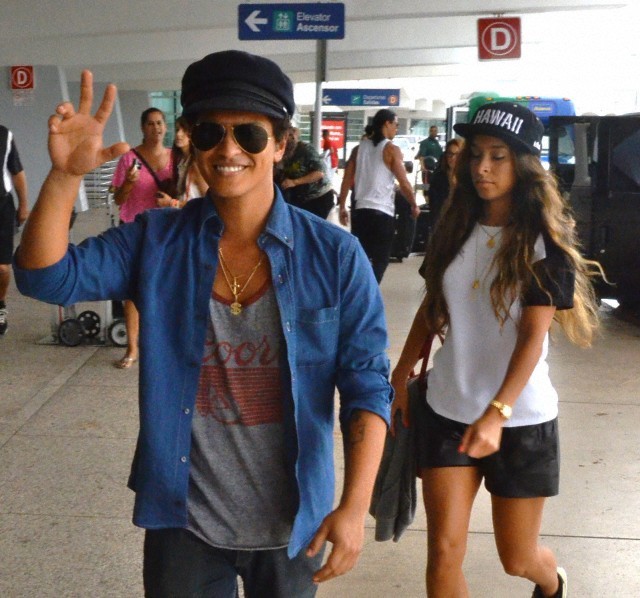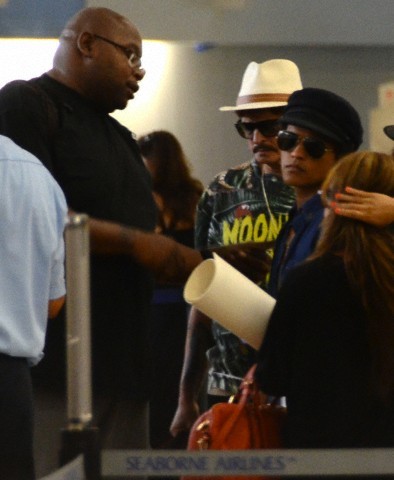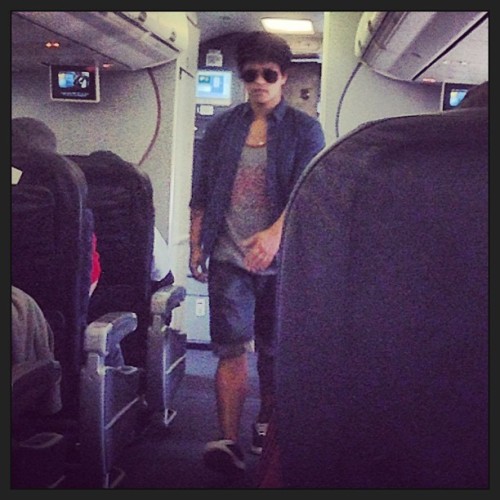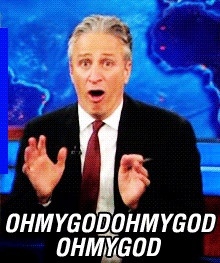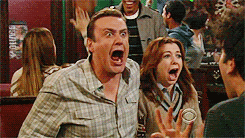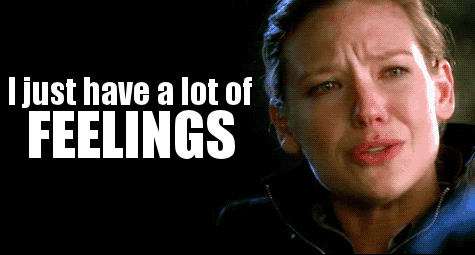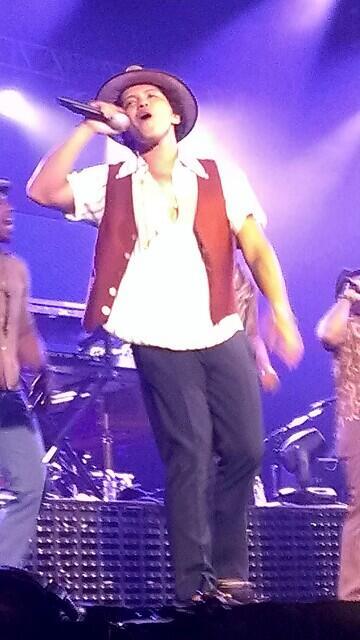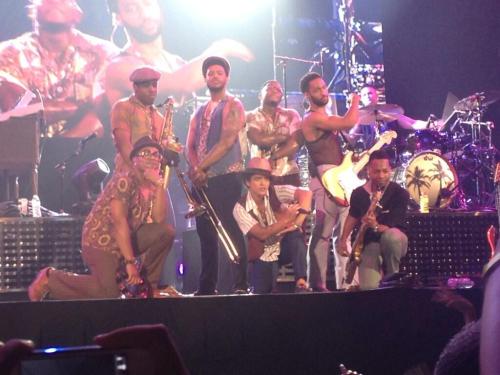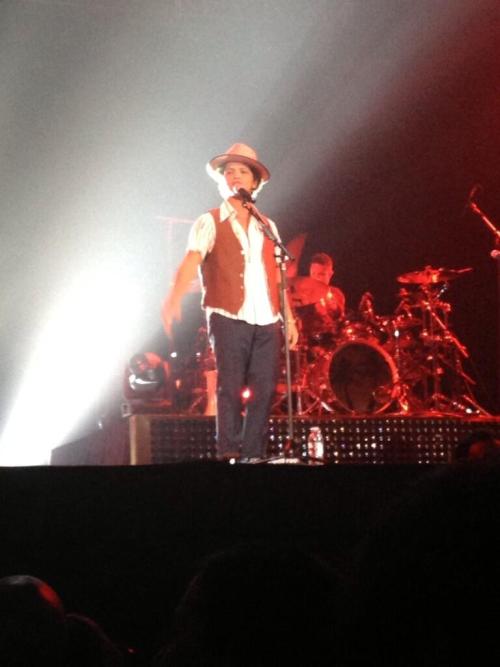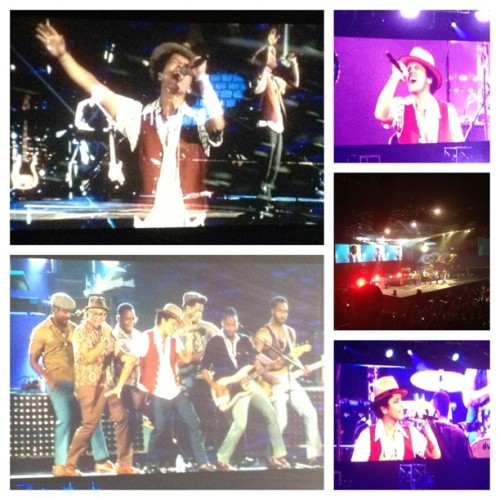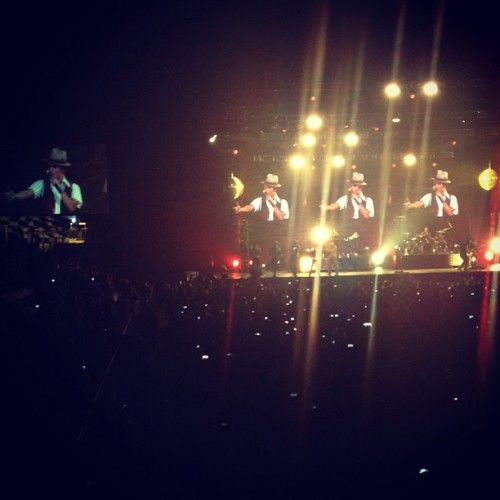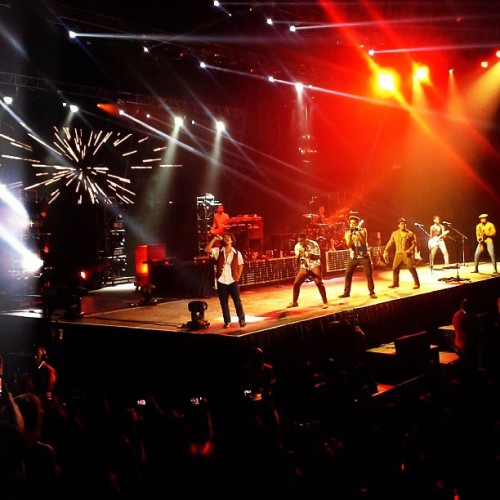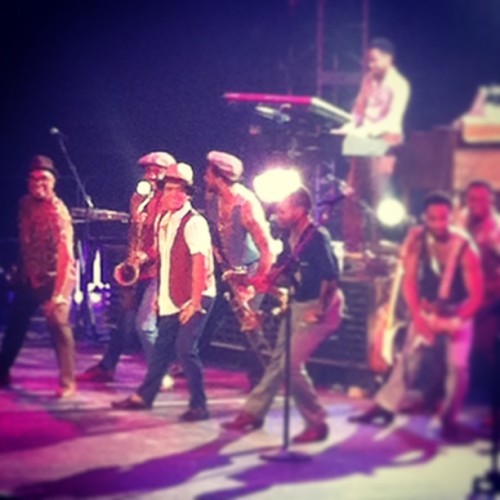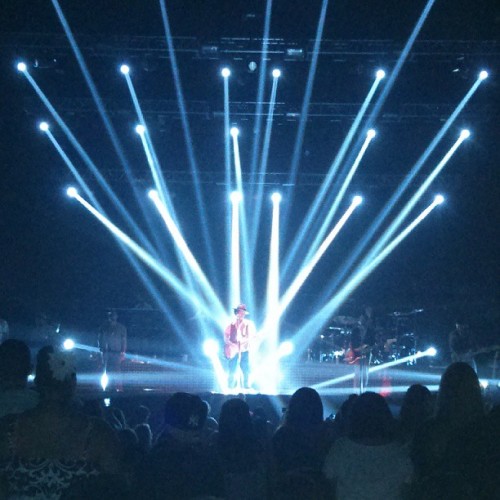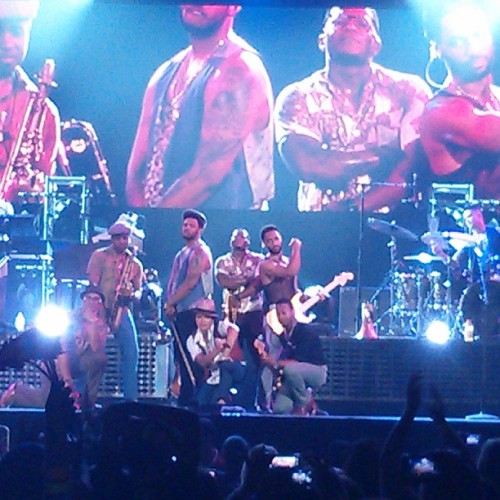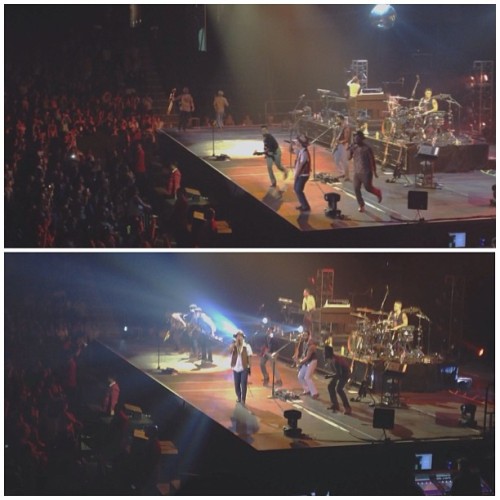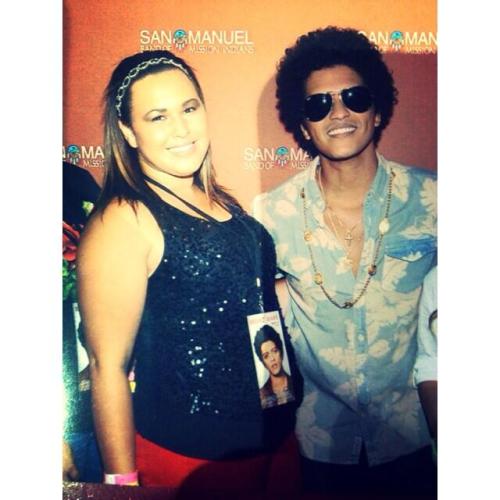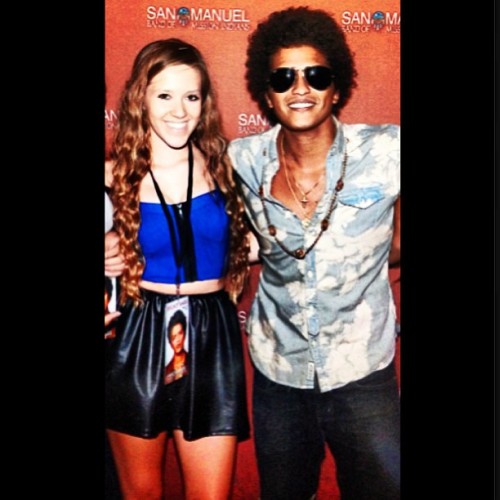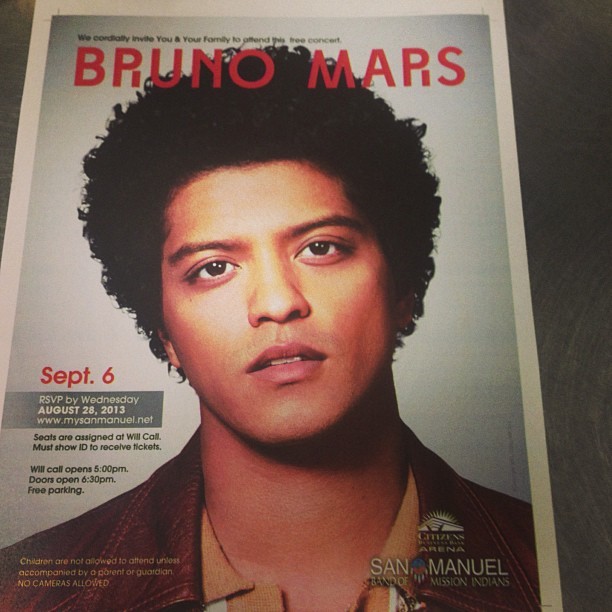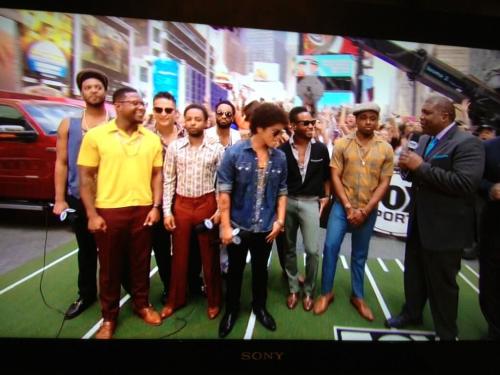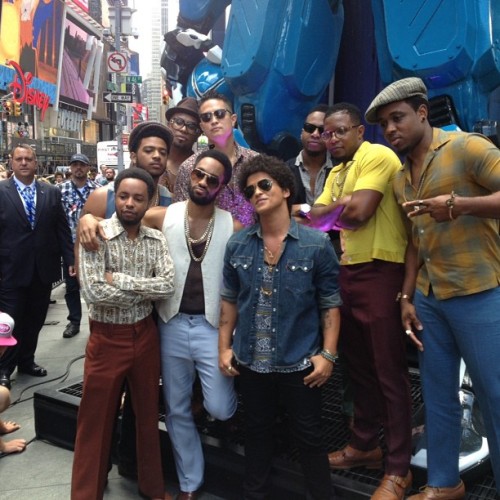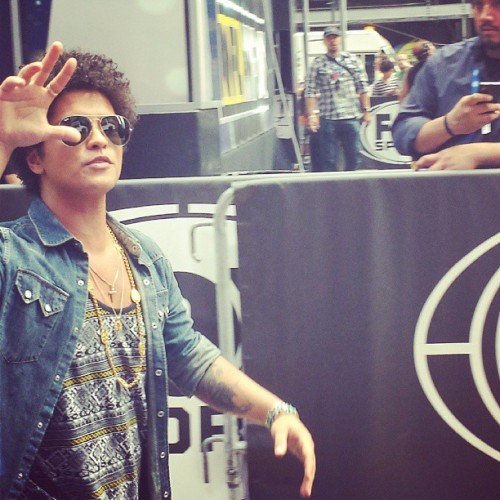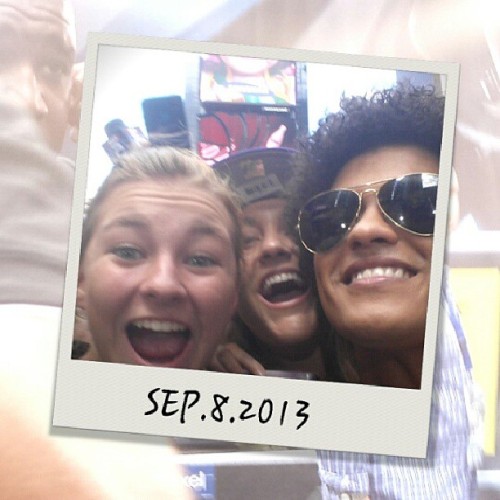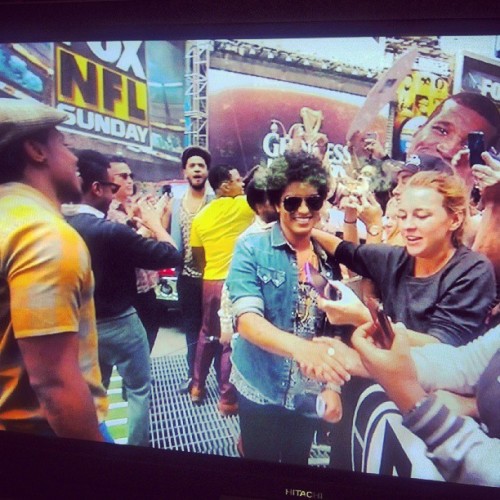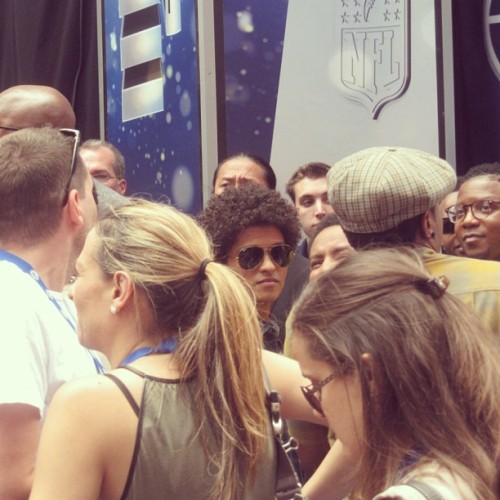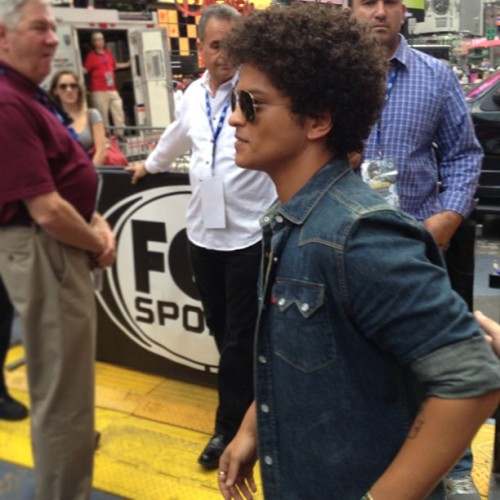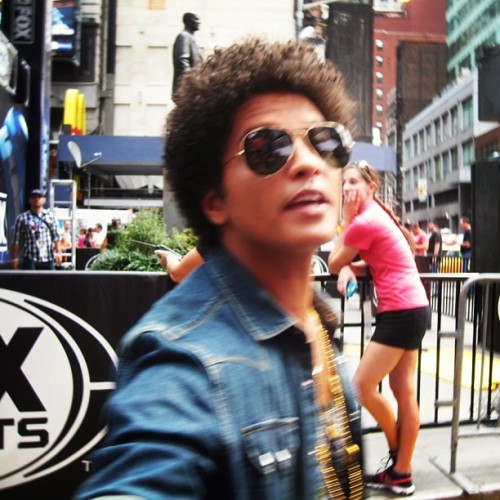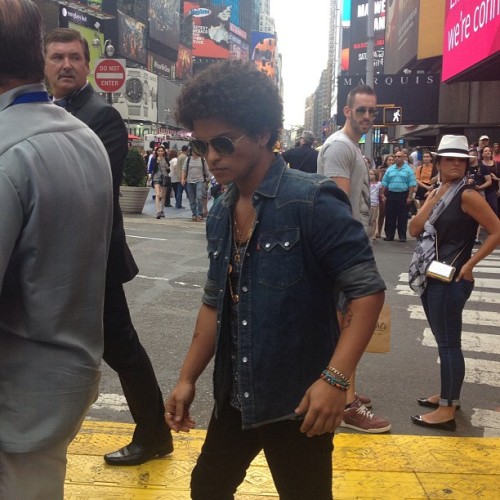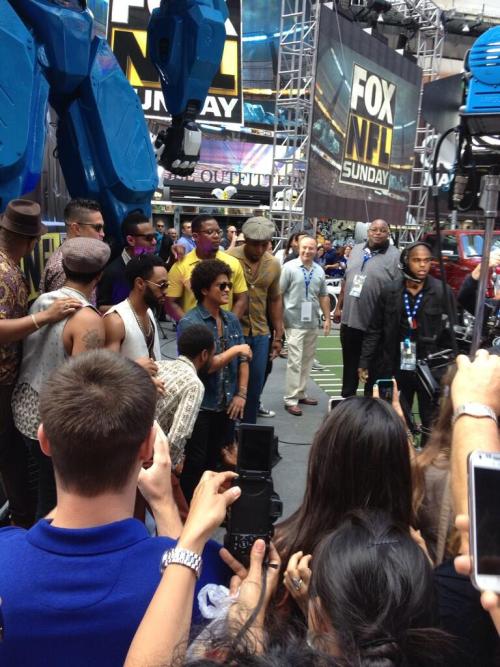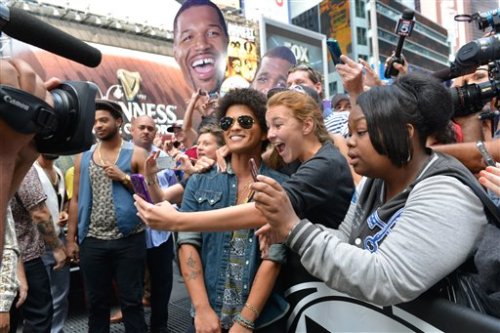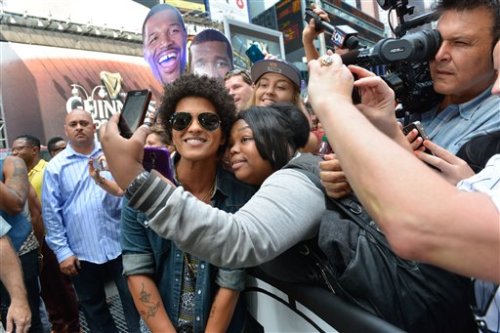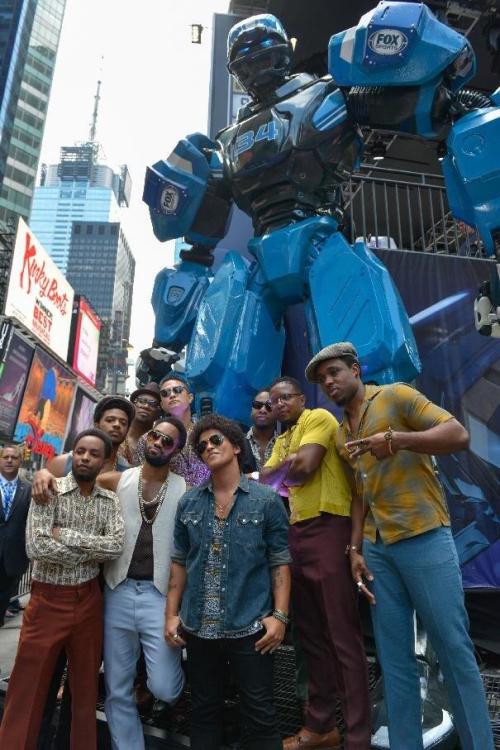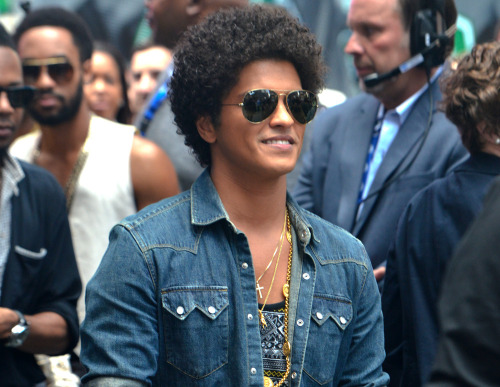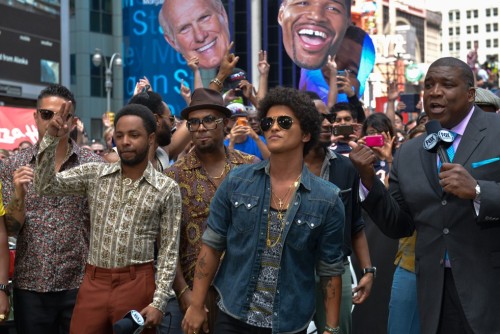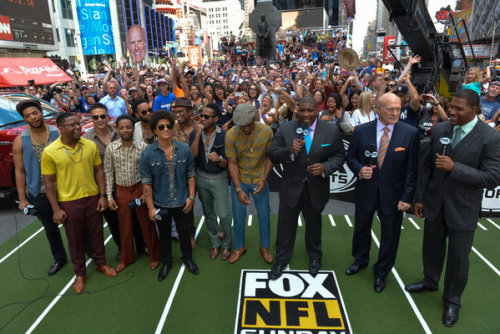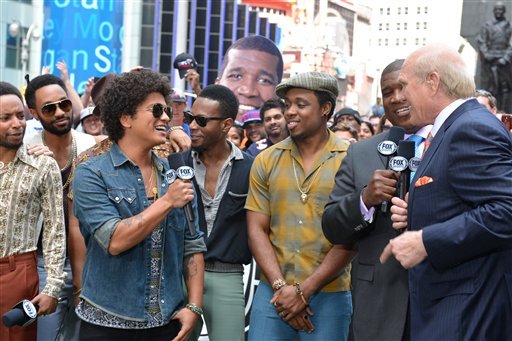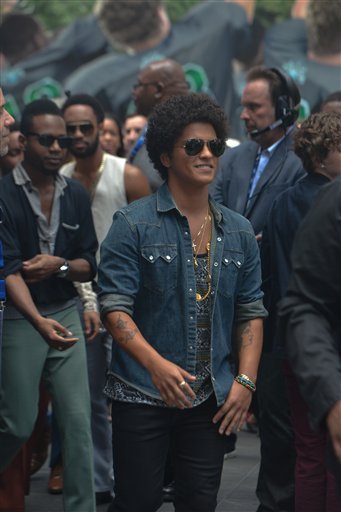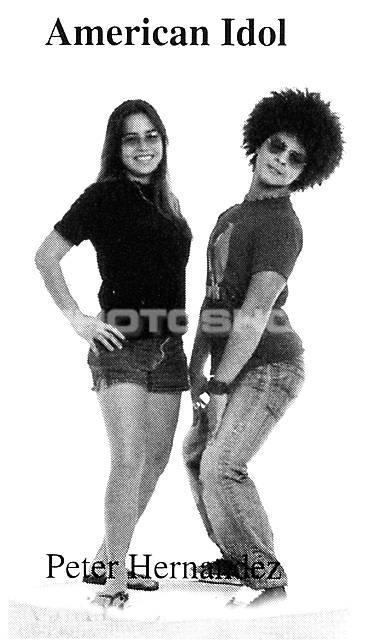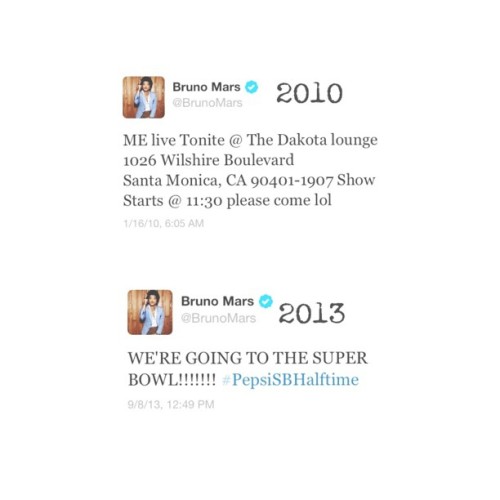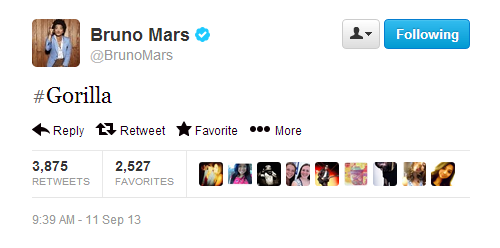WME's John Marx on Bruno Mars' Super Bowl Gig, Sold-Out Arena Tour Strategy, Not Having Presales (Q&A)
By Mitchell Peters, Los Angeles | September 10, 2013 8:00 AM EDT
Bruno Mars has not only proven to be a master at creating multiple hit songs, but he’s also solidified himself as one of today’s top live performers. In addition to being named the halftime performer at next year’s Super Bowl XLVIII, Mars recently wrapped his first sold-out headlining tour of North American arenas. The 42-date Moonshine Jungle Tour grossed $40.5 million and drew more than 565,000 fans, according to Billboard Boxscore.
In an extremely rare interview, John Marx, a partner in the music division at William Morris Endeavor (WME), tells Billboard.biz that booking the Moonshine Jungle Tour was one of the most exciting experiences in his 37-year career in the touring space.“I stopped giving interviews years ago, but I had to do this for Bruno, because he’s that special,” says Marx, who is also part of the WME teams that book such heavyweight touring acts as Lady Gaga, Usher, Peter Gabriel, Sheryl Crow and Justin Timberlake. “This whole project has been exciting, unique and special.”
The North American leg of the Moonshine Jungle Tour began June 22 at the Verizon Center in Washington, D.C., and finished Sept. 1 at the Coliseo de Puerto Rico Jose Miguel Agrelot. Support acts on various dates included Ellie Goulding and Fitz & the Tantrums. The trek was in support of Mars’ second album, “Unorthodox Jukebox,” which debuted at No. 2 on the Billboard 200 (subsequently reaching No. 1) and has thus far sold some 1.7 million copies, according to Nielsen SoundScan.
Click Here For the Current Billboard Boxscore Chart
Following a performance at the iHeartRadio Music Festival in Las Vegas on Sept. 21, Mars will travel to the United Kingdom and Europe for a two-month arena tour. Mars also has a handful of Australian/New Zealand concerts scheduled for early 2014, and will play another 40 dates in North America beginning next June, according to Marx. In addition to Marx, Mars’ team at WME also includes Tony Goldring (international booking), Sara Newkirk Simon and Michele Bernstein. Mars is co-managed by the Creed Company’s Brandon Creed and Kevin Beisler.
Here, Marx gives Billboard.biz a fascinating inside look at the booking strategy behind Bruno Mars’ sold-out North American headlining tour, his thoughts on the artist’s Super Bowl announcement, why he was confident Mars could jump from theaters to arenas, the "wisdom" of presales, how Ellie Goulding was chosen as support and why Mars will be an arena-headlining act for years to come, and much more.
Billboard.biz: First off, what are your thoughts on Bruno Mars being announced as the halftime performer at the 2014 Super Bowl?
John Marx: Everyone on the team couldn't be more excited for Bruno. There's no bigger stage than the Super Bowl, and the NFL's choice speaks to Bruno's power as a performer, and solidifies him as a global superstar. We're looking forward to what will surely be an incredible show.
How long have you worked with Mars?
I started with Bruno about two years ago. Matt Galle from Paradigm had put that tour together. I was hired after that.
Prior to this North American arena tour, Mars was mostly playing theaters and ballrooms in support of his 2010 debut album, “Doo-Wops & Hooligans.” What was the strategy behind booking the Moonshine Jungle Tour and why were you confident he could jump to arenas?
The strategy started back in January of 2012. At that point, we decided we were going to do arenas. Part of that was based on his prior success on the road -- not only in terms of the tickets that had been sold, but more so in terms of how dynamic of a performer he was. So when one goes about taking that leap from smaller venues to arenas, it’s never an easy one. Analytics only give you so much. The rest of it has to do with what’s in your gut and what you think. You hope you’re right, but you take precautions to make sure that you don’t leave any empty seats.
With that in mind, when we started to look at the venues, they were all ones that could be cut down. We had, generally, three different configurations going before we even sold past the 180-degrees. This would allow us to go on sale with our initial cities -- which I believe were five -- and we got a good look at how it was selling, and whether there was any price resistance. That was our first breath of relief after a year or so of putting this together, and believing we were right.
Ellie Goulding was the support act on the majority of dates. In 2012, she’s had four hit singles on the Billboard Hot 100 with “Lights,” “Anything Could Happen,” “I Need Your Love” and “Burn.” Did you feel that including her on the tour would give it an extra boost in ticket sales?
Well, of course. Anytime you’re swinging for the fences, you want to buy as much insurance as you can. So that was the pervasive thought with all of us who were driving the ship. We solicited all of the agencies and asked for everybody’s suggestions. At the end of the day, it was Bruno who picked Ellie. It was wonderful, because [WME] represented her and that probably made it a little easier to put everything together. We think it was a great choice.
What were some of the ticket sales trends you observed in various markets?
First of all, we priced each market differently. Ours were priced for the market. P1 tickets in some of the markets were $62, and in the major markets P1 tickets were $130 or $140. Generally speaking we had four different price points. In the secondary cities where we had a less expensive ticket, we had maybe two or three different price points. But what you look for when you go on sale is if it’s selling front to back. If it isn’t, you’ve obviously priced your tickets in the front too high -- or, rather, too many of those P1 tickets. And you’ll find a valley between the very excellent seats that diehard fans must have, and that next P2 ticket. We didn’t experience any of that.
We were all on the phone together for that first round of dates that went up. It was almost like a war room. We were online live through Ticketmaster. As soon as you go on sale, you open the virtual gates; people come in and you see how many people are looking and holding, and how many of those translate to sales, and how fast it goes. It was a very exciting moment for everybody on that call, because we had a situation in L.A. at Staples Center where the Jay Z/Justin Timberlake show (at the Rose Bowl on July 28) had just dropped on top of what was going to be our option day -- the second day at Staples. (Bruno Mars performed back-to-back concerts at Staples Center on July 27-28). [Jay Z/Justin Timberlake] had just gone on sale and sold out, I think the week prior to us going on sale with our first Staples date. AEG was concerned about that. I, on the other hand, was still bullish.
We went on sale and it was selling so quickly in virtual time that we decided to roll into the second show and put that on sale. As soon as we saw we had virtually cleaned out the first show in real time, we lit up the second show and that cleaned out. We left 20,000 people in the virtual waiting room that would’ve potentially bought other tickets. This could’ve easily gone, we believe, to three or maybe four days (at Staples Center). At the end of the day, we sold out 30,000 tickets and we were happy with that. We decided to close it at that.
Were there any other markets where you could’ve added multiple bookings because of high demand?
We picked 42 dates, which is ambitious. Generally, the mistake people make is picking too many cities. Artists can generally play 24 dates and when you get beyond that sales start dropping off, and that’s when it gets a little bit dangerous. Not only were we bullish on what we thought he could sell, but we protected that with how we opened up the venues. We did go pretty deep into the markets. We could’ve easily done a second Chicago date, but we decided to go with Minneapolis instead, which sold out on the on sale. We did hold a second Toronto, which we ended up re-launching and putting on sale. We eventually sold 30,000 tickets in that city.
We had a one-plus-one in Denver at [Red Rocks Amphitheatre], which we actually chose … because [Pepsi Center] in Denver doesn’t really cut down. And being from Colorado, by way of attending the university there and understanding the way the city works and the appreciation people have for Red Rocks, we thought it would be a great play for him. We had the second show ready to go. That too, like Staples Center, we rolled into on the on-sale and sold both out that day -- 18,000 tickets in Denver.
Why do you think the Moonshine Jungle Tour sold so well from the very start?
Originally, the tour was going to go in February. The record was a little late in coming, even though we booked it a year in advance. I’ve had a lot of success with my artists touring in the first quarter, because everyone generally waits until the summer. This year, everyone decided to tour in the first quarter. So not only were we late with our product, but there was a great deal of traffic during that time. So we pushed it back to summertime. We then decided the way it was going to be launched was off of the Grammys. Right after the Grammy performance (on Feb. 10), we announced the tour was going to happen. We didn’t give any details. We then fed it daily, or weekly, with new information. Two days later we announced the cities, and a few days after that we announced the dates and venues. Very untypical of the things way roll -- usually one announces and you go on sale later that week. We announced and went on sale two-and-a-half weeks later with the first round of dates. That was one thing that made it different. A lot of people thought we were crazy.
And there was a second thing that made it different. I was reading the American Express and Citibank proposals, and all of a sudden the light bulb went off in my head. I said, “I don’t think we should do a presale.” I spoke to Michele Bernstein, the head of marketing at WME, who was driving point in the marketing space. I asked what she thought and she agreed with me. Then we spoke with [Bruno Mars managers Brandon Creed and Kevin Beisler] and everyone agreed to not do a presale. Some people thought it was a good idea, but generally in the beginning everyone thought it was a terrible idea. Pretty much every local buyer called me after it went on sale and told us they thought the absence of any presale was a very strong contributing factor toward the overall success of this tour. I don’t think there was one buyer out there after this went on sale that didn’t cite that as a very key element in the way this was launched.
Did all 42 dates sell out?
Every date sold out, except in St. Louis (Scottrade Center). We increased the capacity to 16,000 and sold out 14,000. Not only did every date sell out, but the stage was built so that we could have great sight lines with the hoped-for success we could open up into 240-degrees and maybe beyond. We ended up opening and selling 270-degrees, setting records in a lot of venues. Painstaking care was given to making sure that all the seats we opened in those areas could have a good experience with the show. I have to give credit to our production manager, Joel Forman, who was the one hands-on with that, in terms of opening up those seats.
Mars' latest album, “Unorthodox Jukebox,” has already produced four hits on the Billboard Hot 100. Did you see ticket sale spikes as those hits started to gain traction at radio?
When we went on sale, we already had “Locked Out of Heaven” as a huge success. It’s the type of song that really motivates people to purchase a ticket. It has that live element to it; it was a very active track. So between that and the Grammy performance, we had a great launch pad to go up with. But the question is, do you see spikes with hits? Of course. In the pop world, they say, “Hit records cure cancer.” So they can do just about anything, including spiking sales. But in the case of Bruno, everything was very consistent. When we went up, we generally went up and out. And on some of those dates that were a little bit slower, I don’t think anything went up with less than 7,000 tickets.
If you could go back and book the tour again, is there anything you’d do differently?
I’m not bragging, because that’s not who I am or who we are as a team. But we got it right. We had a long time to prepare for it. But moreover, the record company’s (Atlantic Records) contribution, in terms of bringing the song home, and obviously Bruno and the Smeezingtons for writing such incredible music. Everything came together perfectly. Usually in my life I use experience to understand things better and always improve the next time around. Honestly, I don’t know what I would’ve done differently. It worked that well, and it was because of the efforts of everybody.
Do you think this tour solidifies Bruno Mars as an arena-headlining act for years to come?
Absolutely -- and not just an arena act in North America. We we went on sale, I want to say in April, for a very ambitious tour in Australia. That is now 80% sold out. Most of the counts are in the 14,000 to 15,000 range and the grosses are all above $1 million per night. And the dates don’t take place until February. So we’ve sold out two Sydney dates, two Melbourne dates and we’re going to be adding more. We have a total of nine dates on sale there. He is a certifiable, global phenomena that will find arenas a small venue in the years ahead. You’ll see this guy play wherever he wants to play.
Have there been talks about when Mars will tour North America again?
We have that already planned out. It will start in June and end around mid-August (2014). I can’t reveal the cities and dates, but we’ve got about another 40 dates.
http://www.billboard.com/...r-strategy
Great article and 
 at Bruno performing again in North America! That means I'll get another chance to see him again
at Bruno performing again in North America! That means I'll get another chance to see him again 
![Bruno Mars - Moonshine (2012) [1200x1200]](http://www.josepvinaixa.com/blog/wp-content/uploads/2012/11/Bruno-Mars-Moonshine-2012-1200x1200-300x300.png)
 New topic
New topic Printable
Printable Report post to moderator
Report post to moderator